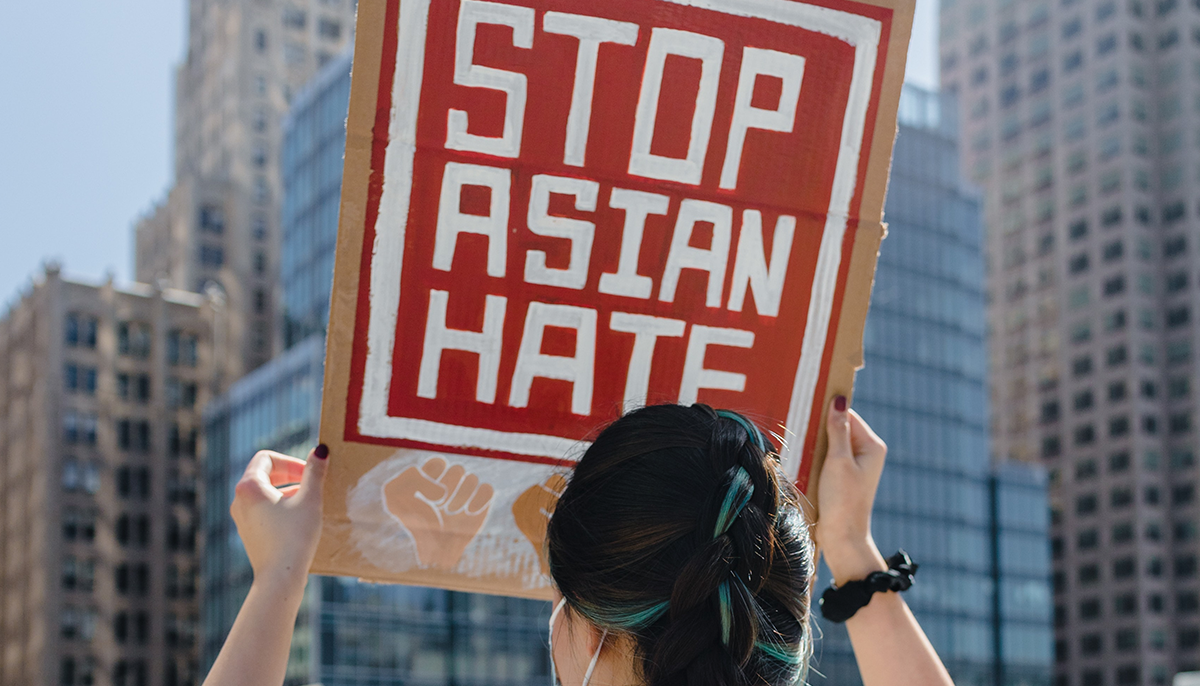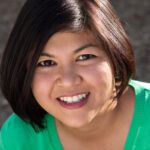“I am exhausted from the rage I feel every single day, not at the man who said ugly things to me, but at a system that thrives by pitting our communities against each other.”
I speak these words to a crowd of hundreds as I stand on stage for the “Love Our Communities: Build Collective Power” rally in Little Tokyo.
A public health emergency due to the deadly Covid-19 had been declared by the World Health Organization on January 31, 2020. The media reported that the virus originated in a marketplace in Wuhan, China. Fear and anger toward the Chinese community was brewing.
Most journalists wanted me to break down and cry, or go into a rage, or place blame. They wanted to keep me as their Asian woman victim.
On February 1, 2020 in Downtown Los Angeles people were out and about, and we were enjoying an evening out. We all waited together on the platform for the Gold Line train as music jangled. All felt safe. This was the city I grew up in and these were my people.
We all boarded the train. I sat down and noticed a man standing diagonally from me wearing an LA Kings shirt. I heard the word “Wuhan.” He got louder. “Every disease has come from China!” he said. “Chinese people are dirty and disgusting!”
“Who is he talking to?” I thought. I didn’t think it was me. I wasn’t from Wuhan and I wasn’t Chinese. I scanned the faces of my fellow passengers. I was the only Asian face on the train.
He was addressing the whole train, but gesturing toward me. I was not even visible enough for him to address me directly. For fifteen minutes I sat in my seat, trapped. “He could hurt me,” I thought. I started to secretly record him for evidence.
I breathed a sigh of release when he got off the train. I thought about my mother. What if this happened to her? Would he have hurt her? What about the elders that were being assaulted and harassed? How could we protect them?
That night, I posted the video on social media. I wanted to bring awareness to the racism and xenophobia in our communities, even in a place like Los Angeles that celebrates its diversity. The video went viral.
Local and global media outlets reached out to me. I poured my heart out and retold my story over the next few months. “This is a chance to be heard and included,” I thought.
I felt most respected by the Asian and Asian American journalists who interviewed me. They were empathetic. Their questions gave me the opportunity to share my thoughts on more than just the incident. Some even went as far as to send me a copy of their article before it went to print, so that I had the option of voicing any potential objections.
However, most interviews made me feel used, not heard. Most other journalists wanted me to regurgitate the incident with the freshness of the trauma. They wanted me to break down and cry, or go into a rage, or place blame. They wanted to keep me as their Asian woman victim.
They didn’t understand that the trauma I experienced was more about my worry for the community; I never really took the attack personally.
The man on the train attacked me because of the way my face looked. I knew that anyone with an Asian face was not safe. The pain and fear I felt was for the Asian American community. What happened to me only triggered an avalanche of hurt that I held onto for myself, on behalf of my family, and for my community.
The morning of my speech at the rally, I met with a journalist for an interview. He asked me to ride the train, the same Gold Line Metro that I was verbally attacked on. I reluctantly agreed to it. The further we got into the interview, the more I felt like an actor being prepped for a crying scene. Camera in hand, he directed me to look into the distance. I knew the part he expected me to play, so I dutifully gave him my best mournful, contemplative stare. Days later, he sent me a link to the segment. The opening depicted me looking solemn and concerned. I couldn’t watch any more.
Backstage at the rally, my nervous system goes into full on fight-or-flight mode. My brain loops with the thought “Why did I say yes to that interview at the train station?” I try to tap into my mindfulness practice by observing my emotions, but to no avail. I am still filled with terror.
I chant a familiar phrase, something my mother told me to always go to in time of need. Under my breath I whisper, “Namo tassa bhagavato arahato samma sambuddhassa.” It doesn’t work. No time left.
The MC announces, “Tanny Jiraprapasuke.” I step onto the stage, but can’t feel my legs. “I hope the mic is low enough for me. What did I do in my past life to deserve this suffering?” I think. I take the mic with my shaking hand. My heart beats out of my chest. My voice catches as I proclaim, “My name is Tanny and I won’t stay silent!”
The crowd roars its approval. I’m overwhelmed and tears burst from my eyes. I am liberated from years of swallowing my hurt and anger from being rejected as an American and treated like a foreigner in my own country.
I do my best to see all the Asian faces in the crowd. Everyone stares back in celebration of me. In the respectful silence of their listening, I feel deeply heard. For the first time in my life, I feel that I belong – not just as a Thai-American, but as part of the collective community of Asian Americans.
Through my voice, I offer communion. Connecting my story with the past rage of victimhood and then transitioning to a letter I wrote that is meant to give hope through compassion.
I imagine that the man wearing the LA Kings shirt is in the audience as part of our community. I soften my belly, taking a few seconds to offer him loving kindness, and say to myself, “May you be loved.”
I read aloud a letter I wrote to him. “I never thought that my Asian face could be the cause of so much hurt in another human being.” As I speak these words, I recognize his pain; it’s the same as the pain of all of us. I close the reading with utmost sincerity, “I write this letter to you so that if we ever meet on the Gold Line again that you won’t fear me and maybe even say hello.” My body relaxes, my mind quiets.
As a young adult, the monks at my temple often told me, “You never know who is here to be a teacher to you. Don’t dismiss anyone, even your enemy.” The man on the train gave me a rageful seed. But because I chose to find his humanity, that seed bloomed into compassion.

